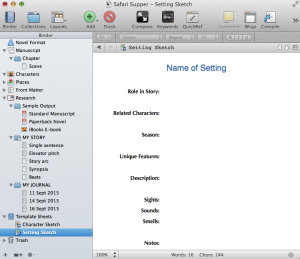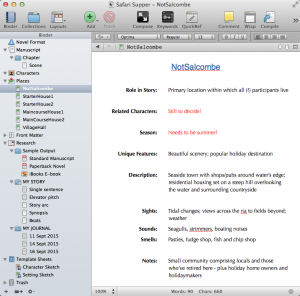Casting around
So I need a plot, but first, it seems, I need characters.
I’ve read up on the ‘theory’ of characterisation, and it would appear that there should be two main characters: my protagonist playing the leading role, confronted by conflict, courtesy of my antagonist. Usually, the protagonist is the goodie, and the antagonist is the baddie – but not always.
I am reliably informed that the protagonist and the antagonist both need to be round, dynamic characters and that both should follow a personal arc!
- A round character (not necessarily in the physical sense) has complex personality traits and motivations.
- A dynamic character can (should!) change dramatically according to what happens to him/her within a novel.
- A character’s arc is the inner journey that character takes during the course of the novel … how they are transformed …
I also need some (not too many!) minor characters: ‘static’ characters who don’t change at all, regardless what happens – they never learn; and ‘flat’ ones who change little but represent a single quality (e.g. devout, gluttonous, mean-spirited).
All this jargon! But let’s play by the rules (must we?) and aim for the perfect novel …
I go back to my elevator pitch. The only thing that seems set in concrete – apart from the Safari Supper event itself – is the location. My characters live in a small seaside town. In my search for my characters, perhaps I should first focus on their whereabouts?
Scrivener to the rescue! The Fiction template I chose when I created this project includes a Setting Sketch template and this prompts me to write a bit about every location relevant to my story.
The side headings are recommendations only. You can put whatever details are important to your story.
I notice ‘Season’ and immediately begin to wonder at what time of year I’ll set my story. One more thing for my to-do list – and I note that challenge in MY JOURNAL entry for today.
To create a new location file, select Places / Add / New from Template / Setting Sketch.
My story will have several settings within my fictional seaside town. At this point, I’m not sure how many, but I reckon I’ll need at least two houses per course, plus the village hall. Clearly, I can’t use the name of the town I live in – that would be too close to home!
In Under Milk Wood, Dylan Thomas set his tale in a small Welsh fishing village and he called it Llareggub, which reads as ‘bugger all’ backward. What does that tell you about his views on the inhabitants?
I use dummy names for now – and when inspiration calls, it’ll be easy to change them using Project Replace. To find out how – watch this two-minute video by Alan Petersen.
I populate these location sketches with whatever comes to mind. I stick pretty much to the truth for these basics. It provides me with a firm ground on which to base my story. If I know I still need to make a decision, I change the text colour to red – easy to spot and amend later.
Your turn!
Think about your plot, if you can, and, failing that, start identifying your characters and locations.
On Friday, I’ll be planning to make more progress on my characters. Maybe next week, I can start plotting?
The ScrivenerVirgin blog is a journey of discovery:
a step-by-step exploration of how Scrivener can change how a writer writes.
To subscribe to this blog, click here.
Also … check out the Scrivener Tips
on my ScrivenerVirgin Facebook page.






No Comments